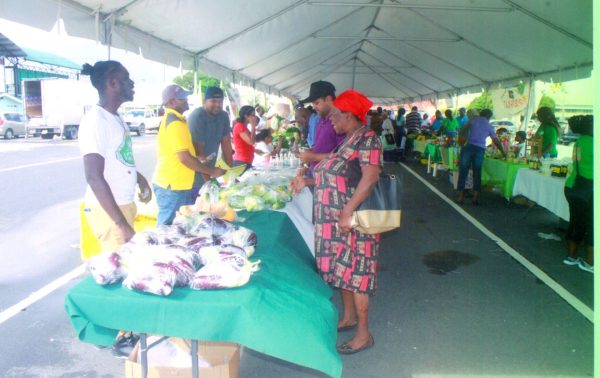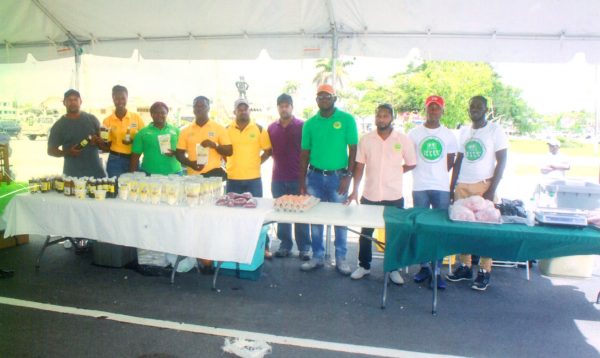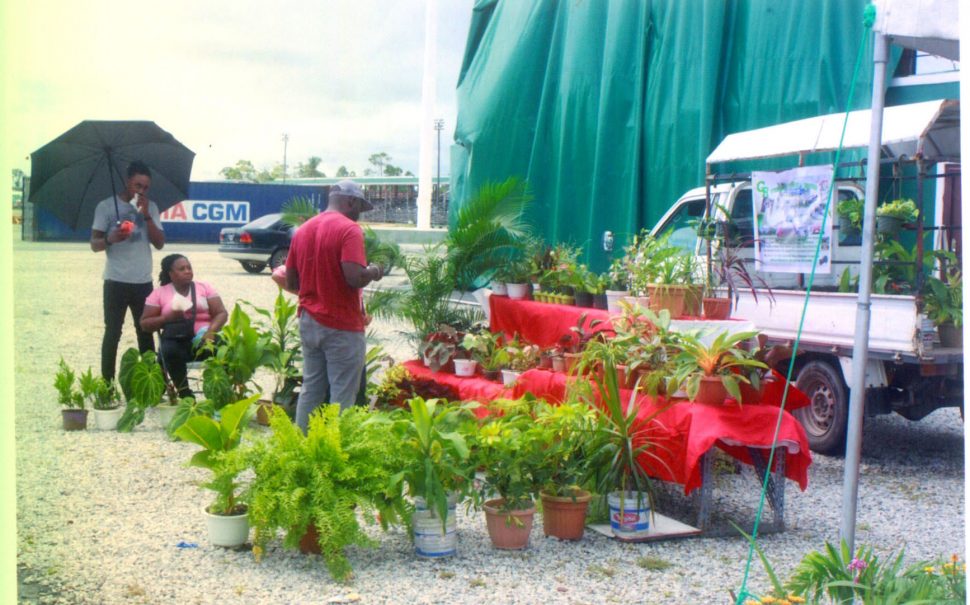Locally organised Farmers’ Markets are yet to make the kind of mark that they seek to make in terms of providing a recurring assembly of farmers or their representatives selling the food that they produce directly to consumers and in effect enabling the creation of close and often lasting bonds of mutual benefit amongst farmers, shoppers and communities. Yet, for all their limitations, there is no mistaking the commendable effort which the New Guyana Marketing Corporation (GMC) continues to make to create rewarding linkages between buyers and sellers from across the far-flung regions of the country.
A few times a year the GMC stages its Farmers’ Markets in various parts of coastal Guyana, the event providing modest numbers of buyers and sellers the opportunity to trade. On Saturday, at the D’Urban Park venue, the numbers were below what they might have been, some of the attendees making the point that the relatively modest participation might have been averted if, as had originally been planned, it had been held on the Independence Anniversary weekend.
This newspaper was told that the logistics of staging such an event so close to the blue ribbon Flag Raising Ceremony meant that the Farmers’ Market had to ‘stand down’. Still, it is difficult not to resoundingly applaud the persistence of the GMC. Arguably, consideration should be given to decoupling this agency from the Ministry of Agriculture, affording it the flexibility to work independently with farmers (without the administrative, budgetary and operational restraints that customarily affect government ministries) while remaining part of the state infrastructure to oversee the forward movement of the agricultural sector.

Only a proverbial handful of bona fide farmers turned up on Saturday for the Farmers’ Market though what was striking was the fact that the few who put in an appearance had travelled from as far as the Pomeroon, at one end of the country, and from the Corentyne at the other end. The prevailing view appeared to be that the limited farmer participation had to do, in some measure, with travel costs. Already doing much to subsidise participation in the event, it does not appear that the GMC, given its own material constraints can do a great deal more at this time.

Farmer representation at last Saturday’s Farmers’ Market was augmented by the presence of impressive numbers of the growing ‘army’ of agro-processors whose rise to a pleasing measure of entrepreneurial prominence has been due in no small measure to the support that has been forthcoming from the GMC, notably through strategy-related advice offered by the agency and through marketing openings by way of product exposure at the Guyana Shop.
One of the key roles which the GMC has played in the entrepreneurial development of both farmers and agro-processors has been that of bringing the parties together. Here, they succeed in killing two birds with one stone, identifying reliable markets for volumes of farm produce, on the one hand and ensuring that agro-processors benefit from regular and reliable supplies of farm produce for their manufacturing pursuits.
The modest successes which these small Farmers’ Market efforts have realised so far have made an eminently viable case not just for more events of the kind but for much bigger events. One can, for example, envisage a Farmers’ Market that fills the entire space comprising the D’Urban Park Tarmac. It might sound fanciful but such a thing is eminently possible. While it would be – to say the least – churlish to take lightly the sustained efforts of the GMC to stage these events, it is altogether valid to raise the issue as to whether we are not yet to grasp the overarching importance of events like Farmers Markets. They are, a priori, an essential component in the building and rebuilding of local economies, by affording local farmers/agro-processors opportunities to secure access to cost-effective retail options. Making farming profitable is one of the key objectives of Guyana’s agricultural sector.Farmers’ Markets also provide cost-effective sales opportunities for farmers (and agro processors) by offering short periods of relatively intense retail sales that are attended by low fixed costs. And while there are cost-related and logistical challenges associated with moving farm produce from farm to market, Farmers Markets allow farmers to be full-time farmers and part-time retailers.
At the same time large volumes of sales provide farmers with the incentive to bring even greater quantities of produce to market. Further, by attracting buyers and sellers from far-flung communities, Farmers’ Markets possess the potential to become important social events for communities. Farmers’ Markets are also culturally significant, by serving as they can do as meeting places that encourage amicable interaction. Indeed, it is not unlikely that for many buyers, the social aspect of Farmers’ Markets may be as important as the commercial ones.
Beyond that, Farmers’ Markets can offer opportunities for citizen participation in food policy issues whilst serving as a civic voice on broader matters of importance to communities including public health, community planning and local government issues. Farmers markets can also help bridge ethnic, cultural, political and economic divisions that often exist between and amongst citizens.
Limited marketing and logistical challenges meant that last Saturday’s Farmers’ Market was not all that it might have been. Still, through the hours that it lasted the ‘traffic’ of visitors/shoppers was brisk, the farmers were reporting satisfaction with sales and the functionaries from both the GMC and the Guyana School of Agriculture who were there seemed suitably pleased with the experience. At the end of the experience, the relative sparseness of the participation notwithstanding, one felt that the Farmers’ Market, by now, has made a more than eminent case for attracting more official attention and certainly more resources than the event is afforded up to this time.





